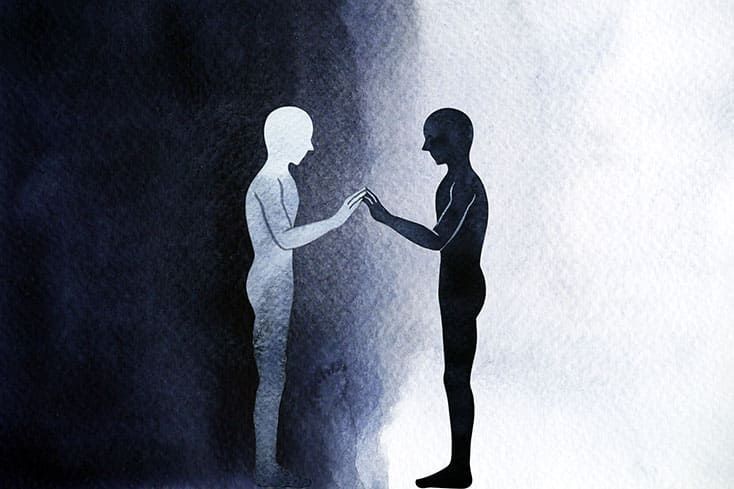我在強迫症旅程中創立了我所需要的公司 | How I Founded The Company I Needed During My Journey with OCD
MHACC 雙語部落格 Bilingual Blog
Scroll down for the English Version ⬇️
作者:Stephen Smith
2021年8月27日
像美國約2.3%的成年人一樣,我與強迫症(OCD)共處——這是一種常被誤解的心理健康狀況,可能帶來毀滅性的影響。一些國際研究指出,患有強迫症的人自殺的可能性可能是一般人的十倍。不過,好消息是,強迫症可以透過一種名為「暴露與反應預防治療(ERP)」的行為治療有效管理。
與大眾媒體對強迫症的錯誤描述不同(通常將其描繪成某種可笑的個性怪癖),強迫症實際上與創傷後壓力症候群(PTSD)非常相似。患有PTSD的人會經歷關於過去的侵入性想法;而許多患有強迫症的人則會經歷關於未來的侵入性想法。
在這兩種情況下,這些侵入性恐懼可能會表現在某些行為上——這些行為往往與個人的核心價值觀相矛盾。這些行為可能是暴力的、性相關的、宗教性的,或與人際關係有關。行為與價值觀之間的脫節常導致極大的痛苦——甚至可能引發嚴重的心理健康共病。
在經歷了一段艱辛的歷程後,我終於確診並接受治療。我認為那些尋求幫助的人應該得到更好的支持。隨著我自身的康復過程進展,我創立了在我掙扎初期真正需要的那家公司。
試圖尋求幫助
我與強迫症的旅程始於我20歲那年,它徹底顛覆了我的生活。我從一名在德州某小型大學主修中文並擔任四分衛的成功學生運動員,在六個月內跌到人生谷底。錯誤的診斷與處置讓我情況惡化。
我一開始找了一位在芝加哥網路內的心理學家,他錯誤地診斷我為廣泛性焦慮症。他的建議治療方法是:每當出現侵入性想法時就用橡皮筋彈手腕。這個錯誤的建議只讓我的症狀更加惡化。
最後我又看了四位治療師,每一位都未能發現我其實患有強迫症。我的健康保險為這些無效的治療支付了數萬美元,而我的心理健康卻持續惡化。我陷入重度憂鬱,足不出戶,並且中斷了學業與足球生涯。
在絕望中,我轉向Google尋求答案。我的搜尋讓我找到了經歷與我幾乎相同的一個社群。他們描述自己如何在與強迫症專家進行ERP治療後,症狀有所改善。在ERP療程中,患者逐漸面對那些引發焦慮與不適的情境,並學習不要進行那些想讓念頭停止的行為(也就是強迫行為),而是學習與焦慮共處,並接受觸發背後的不確定性。我希望這種治療能幫助我,因此找了一位每次收費350美元、但要等七個月的網外醫師。
幸運的是,我沒有等那麼久。這位醫師正確診斷我患有強迫症,並讓我開始進行ERP治療計畫。雖然每週只見一小時,其他時間需要自己管理症狀,但我還是成功完成了治療。八個月後,我重返校園、重返球場,也重拾生活。
我最終在南加州的波莫納學院完成了我的學業與足球生涯。
為他人改變經驗
在畢業前不久,我開始思考下一步該做什麼。我想到那個曾經幫助我走向正確診斷與有效治療的強迫症社群。我也想到全球數以億計的人正在尋找這條道路,卻無法找到。為什麼會這樣?其實不該如此。
我相信數位科技能幫助人們獲得正確診斷、與其他強迫症患者連結,並讓ERP治療變得可及。
2018年,我在芝加哥成立了NOCD辦公室,這是一家遠距醫療公司,致力於為有需要的人提供有效的強迫症治療,不論其地點或財務狀況如何。三年後,我們與治療師、患者、保險公司、醫療機構與雇主合作,改變全球強迫症患者改善與重獲生活的方式。
為未來找解方
2021年是遠距醫療的關鍵一年——無論是身體或心理健康。它不應該只被視為因COVID-19疫情迫使採用的暫時方案(雖然疫情確實加速了普及)。
對某些人而言,虛擬心理健康服務能讓治療變得更容易取得、更負擔得起,同時仍然有效。這些人可能會選擇長期維持虛擬治療方式。然而,值得注意的是,每個人、每位臨床醫師、每間醫療機構都不一樣——適合一個人的方式不一定適合另一個人。
未來,NOCD將持續投入以病患為本的發展目標,希望在治療過程的每一個階段都能提供有益與治癒性的經驗。
雖然我走上成功治療的道路非常艱難,但我很幸運,能有機會為他人改變這個過程。
Stephen Smith 是
NOCD
的執行長,該公司提供全球性的虛擬、實證為本的強迫症治療服務。在經歷一段未被診斷的強迫症掙扎後,Stephen 立志打造一個讓任何人都能取得有效治療的世界,不論其居住地或收入。
Written by: Stephen Smith
Original Source Here: https://www.nami.org/obsessive-compulsive-disorder-and-related-disorders/how-i-founded-the-company-i-needed-during-my-journey-with-ocd/
August 27, 2021
Like 2.3% of U.S. adults, I live with obsessive-compulsive disorder (OCD), a largely misunderstood mental health condition that can have a devastating impact. Some international research suggests that people with OCD may be up to ten times more likely to die by suicide compared to the general population. The good news, though, is that OCD can be managed successfully by a behavioral therapy called Exposure and Response Prevention (ERP).
Unlike popular media representations of OCD, which depict the condition as a silly personality quirk, OCD manifests much like PTSD. People with PTSD experience intrusive thoughts about the past; similarly, many people with OCD often experience intrusive thoughts about the future.
With both conditions, these intrusive fears can take shape in certain behaviors — many of which contradict a person’s core values. These behaviors and can be violent, sexual, religious or relationship-based in nature. The disconnect between one’s behavior and values often leads to crippling distress — and it can even trigger severe behavioral health comorbidities.
After an arduous journey to diagnose and treat my OCD, I felt that others seeking help deserved better. As my own recovery progressed, I founded the company that I truly needed in the early stages of my struggles.
Trying to Find Help
My journey with OCD began when I was 20 years old, and it turned my world upside-down. I plummeted from being a successful student athlete at a small Texas university, majoring in Chinese and playing quarterback, to hitting rock-bottom in about six months. Misdiagnosis and mismanagement of my condition fueled my descent.
I sought care from an in-network Chicago psychologist early on, who misdiagnosed me with generalized anxiety disorder. His recommended treatment plan: Snap a rubber band on my wrist whenever intrusive thoughts appeared. That misguided advice only made my symptoms worse.
I ultimately saw four more providers, and each one failed to recognize I had OCD. In the end, my health plan paid these providers tens of thousands of dollars for ineffective treatment, while my mental health continued to decline. I developed severe depression, became housebound and left my school and football career behind.
In desperation, I turned to Google for answers. My research led me to a community that was sharing experiences nearly identical to mine. They described how their symptoms improved after trying ERP therapy with an OCD specialist. In an ERP session, a patient gradually confronts the situations that cause anxiety and discomfort. Then, rather than engaging in behaviors to make the thoughts stop (also known as compulsions), the patient learns to sit with the anxiety and accept the uncertainty behind the trigger. Hoping that this treatment might be the answer, I found an out-of-network provider who charged $350 a session and had a seven-month waitlist.
Fortunately, the wait didn’t last for months. The provider correctly diagnosed me with OCD and started me on an ERP therapy plan. Despite only seeing the therapist for one hour a week and needing to manage my symptoms alone between sessions, I successfully navigated treatment. After eight months, I was back in school, back on the football field and back in life.
I completed my degree and football career at Pomona College in southern California.
Changing the Experience for Others
Shortly before graduation, I was confronted with figuring out what to do next. I thought about that community of people with OCD who set me on the path to a correct diagnosis and effective treatment. I also thought about the hundreds of millions of people globally looking for this path who are unable to find it. But why? It didn’t have to be that way.
I was certain that digital technology could help people find a correct diagnosis, connect with other people who have OCD and bring ERP therapy to those who need it.
In 2018, I opened the Chicago office for NOCD, a telehealth company dedicated to providing effective OCD therapy to anyone who needs it, regardless of location or financial situation. Three years later, we work with therapists, patients, health plans, providers and employers to transform how people with OCD globally can improve and reclaim their lives.
Finding A Solution for the Future
2021 has been a pivotal year for telehealth – both for physical and mental health care. And it need not be considered a temporary solution borne of the necessities sparked by the COVID-19 pandemic (although that certainly accelerated its adoption).
For some individuals, virtual behavioral health services can make care more accessible and affordable, while still being effective. These people may decide to adjust their therapeutic plans to stay virtual long-term. However, it is important to note that every person, clinician, and provider company or organization is different – what works for one may not work for another.
Moving forward, NOCD will continue to invest in our patient-first focus, with the goal of providing a beneficial and healing experience at every stage of the treatment process.
While my road to successful treatment was difficult, I am fortunate to have the opportunity to change this process for others.
Stephen Smith is the CEO of NOCD, a worldwide provider of virtual, evidence-based OCD treatment. After a personal struggle with undiagnosed OCD, Stephen made it his mission to create a world where anyone can access effective OCD therapy, no matter where they live or how much money they make.
Sign up for our Newsletter
訂閱每月簡訊獲得最新資訊












